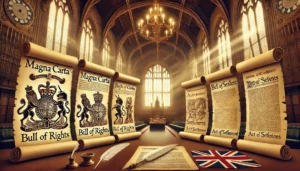2. The Origins of Trusts
Trusts stem from 12th century knights, who would leave their property in the care of a trustee when they were going off to battle (crusades).
In order to have the beneficial use of property, but not own it, monks would donate their property to the Church, who would hold the legal title of the property for the benefit of the monks.
A fundamental aspect of equity is the right of ‘use’. Referred to as the equitable title, this title refers to the enjoyment of the property, which grants the equitable title holder more rights over the property than the legal title holder. In the early days of trusts, landowners would transfer the legal titles of their properties to their heirs before they died, in order to avoid paying inheritance tax. Henry VIII put in place ‘The Statute of Uses’ to stop this practice, however legal draftsmen became imaginative and found a way around this by creating the “right of use upon a use” which is recognised by chancery.
This right of use upon a use is a situation in which A held property for the use (benefit) of B, who held the property for the use of C. The statute made B the legal owner but that did not affect the second use of the property by C (the use upon a use), who remained entitled to the benefit. This second use eventually developed into the trusts that we see today.












